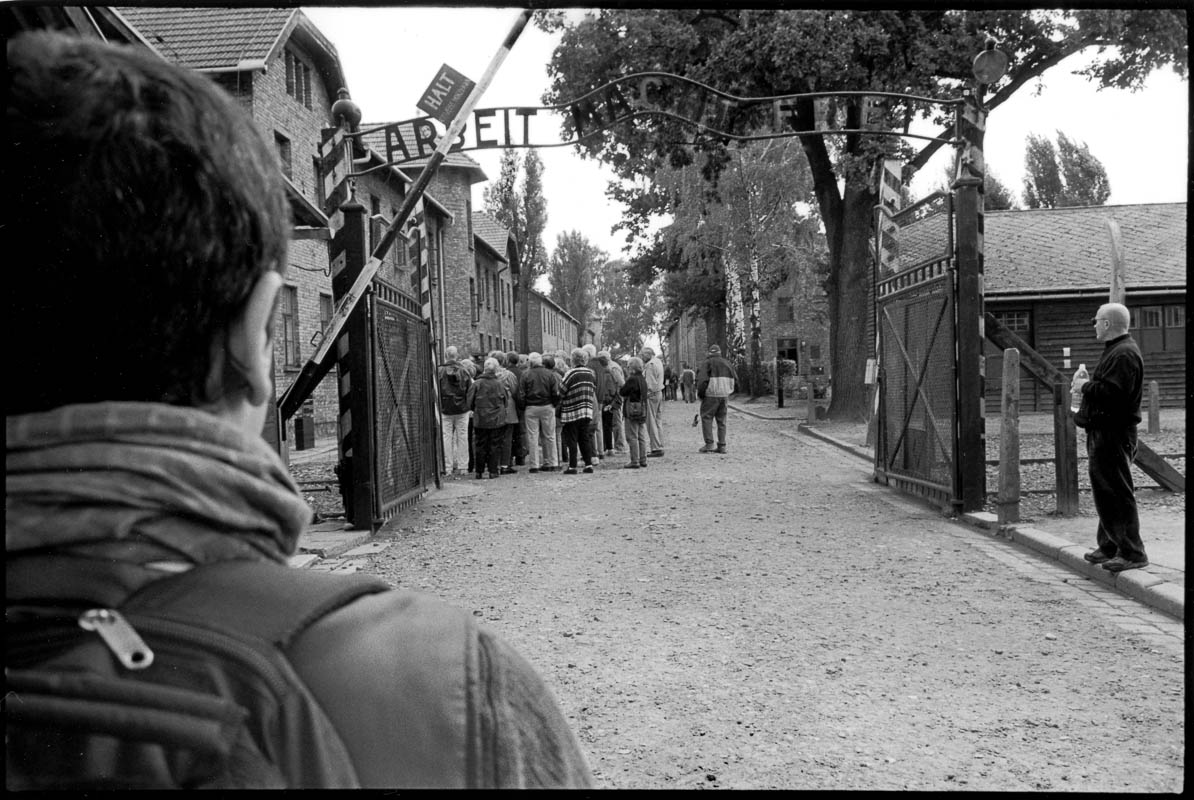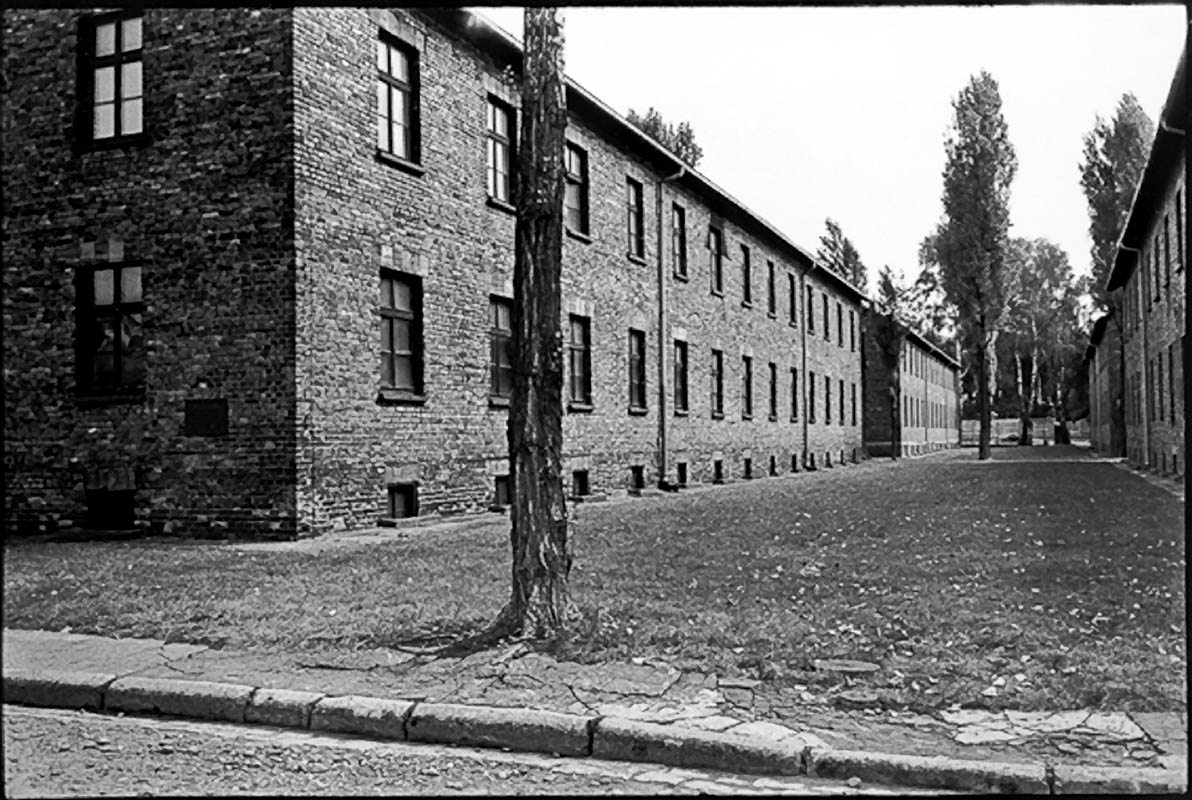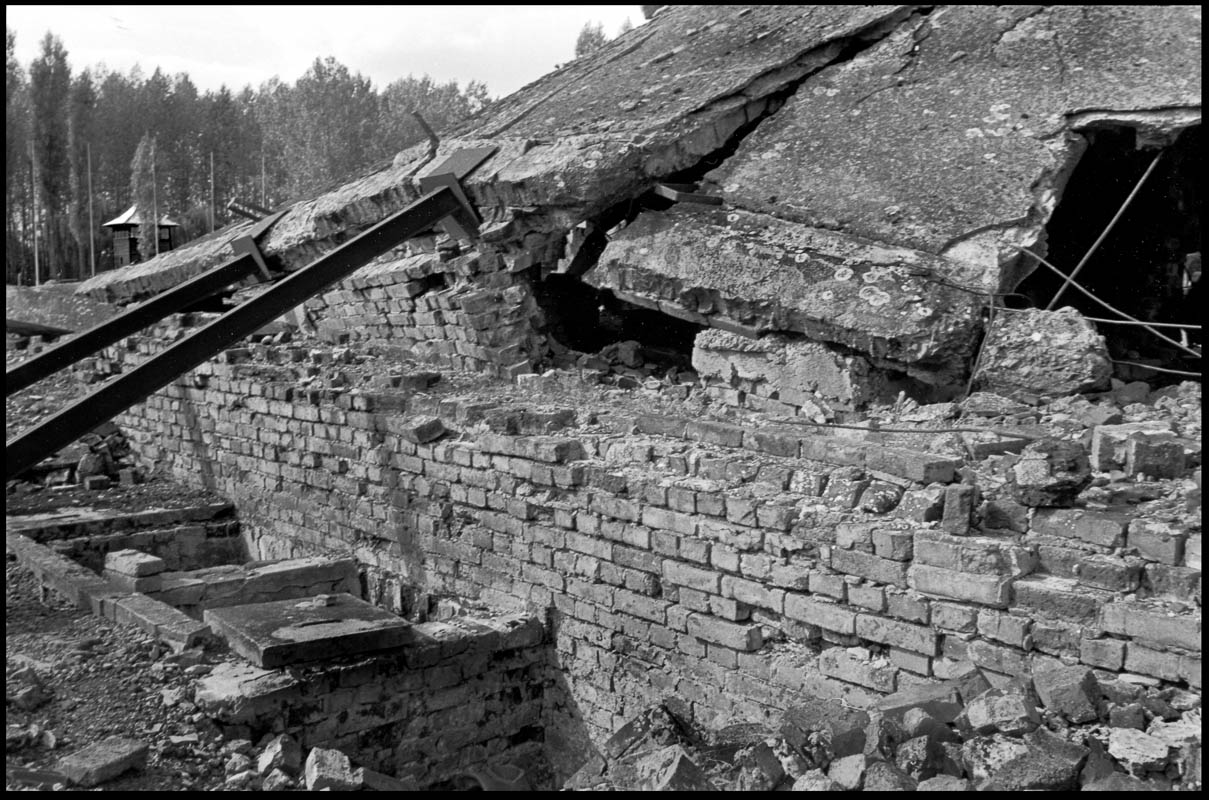About Auschwitz
………………….
Introduction
………………….
Exhibit text | À propos d’Auschwitz | Acts of Resistance 2005
.
An exhibit of photographs and information:
These photographs were taken in September 2002 during a trip to Poland with my older brother George and our friend, Eda. We three lost family here during World War II.
My mother’s pregnancy prompted my parents to flee Lodz, Poland on August 31, 1939, the eve of the German invasion of Poland. George was born six weeks later. They arrived in Canada in June 1941.
We visited some of the places and streets where our parents grew up, as well as Auschwitz Birkenau, the site of mass extermination which they narrowly avoided.
Text in the exhibit is drawn from 3 sources: information researched after our visit, text panels at Auschwitz (printed in italics) and extracts from Eda’s journal. Information includes facts, statistics, themes like Resistance, Escape, and so on. The viewer may follow the photographic narration of our exploration and read parts or all the text.
Established in 1940 by Nazi Germany as a concentration camp in Poland, Auschwitz became a “vast killing centre for the Nazi extermination of the Jews” of Europe in 1942. 1 It was liberated by the Soviet Army on January 27, 1945.
A complex of camps, Auschwitz I was the central camp; Auschwitz II, also known as Birkenau, was the killing center; Auschwitz III: Monowitz, was the IG Farben labour camps, also known as BUNA. There were also 50 sub camps at factories, mines and other work sites. 2
Auschwitz was the largest camp of mass extermination in the Nazi network of 27 concentration, forced-labour and death camps: 9 in Poland, 8 in Germany, 2 in France and 1 each in Austria, Belarus, Czech Republic, Estonia, Latvia, Netherlands, Slovakia and Ukraine. 3
From the first transport of Polish prisoners in June 1940 until the camp’s liberation on January 1945, an estimated 1.3 million people had been shipped here; at least 1.1 million were murdered: 1, 4
Jews: 1,082,000 to 1,100,000 (mortality rate: 94.4%)
Poles: 70,000 to 75,000 (93.5%)
Roma: 21,000 (93.5%)
Soviet POWs: 15,000 (99.2%)
Other nationalities: 5,000 5
………………….
Information Sources:
1 Ralph Blumenthal, “Auschwitz Revisited: Polish Scholars Compile Version Left by Victims and Killers Alike,” New York Times, Jan 28, 2001
2 The Last Expression: Art and Auschwitz, (Feb 4, 2003)
3 20th Century History, (Updated Mar 9, 2018)
4 U.S. Holocaust Memorial Museum
5 Franciszek Piper, “Number of Victims of Auschwitz Birkenau,” Yad Vashem Studies 21 (1991), 98





























